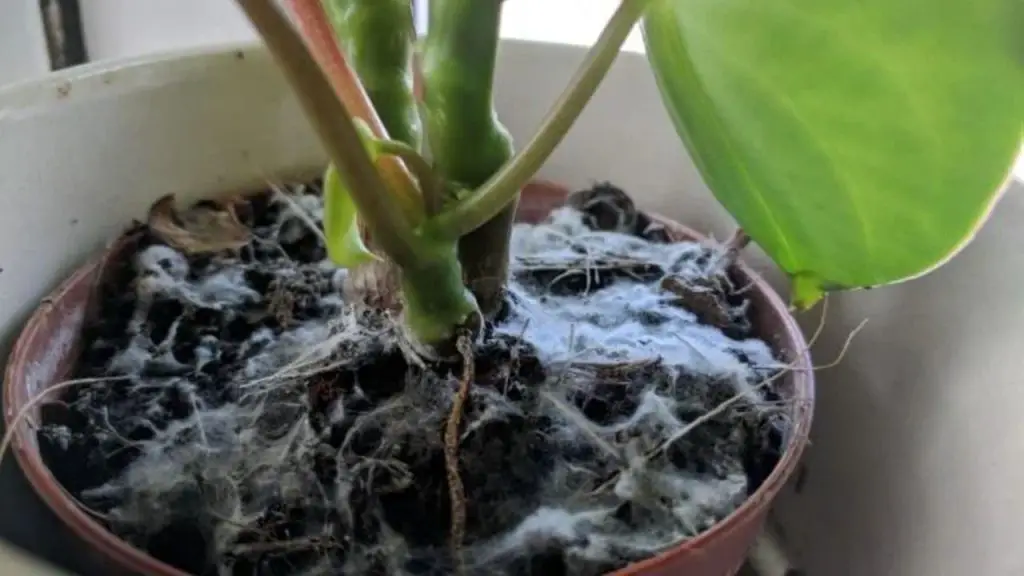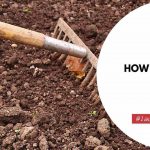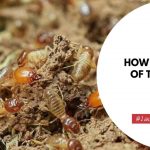Mold can be a nasty issue to deal with, especially if it pops up on your plants. If you’re looking for ways how to get rid of mold on plant soil, you’re in the right place.
In this blog post, we’ll outline some simple tips that will help you eliminate mold from your plants and keep them healthy and thriving. So read on for all the details!
What Is Mold And Why Does It Grow On Plant Soil?

mold is a type of fungi that is found in both indoor and outdoor environments. Mold typically grows in damp or moist areas, which is why it is often found on plant soil.
While mold is not harmful to plants, it can cause damage to your home if it gets inside. When mold spores land on a wet or damp surface, they start to grow.
Mold produces tiny spores that float through the air and can be breathed in. If you have a mold problem in your home, you should take steps to clean it up and prevent it from coming back.
Some people are allergic to mold and can have difficulty breathing if they are exposed to it. If you have mold in your home, you should call a professional to have it removed.
How Can You Tell If Your Plant Has Mold Growth?
One of the problems that can affect plants is mold growth. Mold is a type of fungi that can cause disease in plants. It can also cause problems for people who are allergic to mold. Mold growth can be difficult to detect, but there are some signs that you can look for.
One sign of mold growth is discoloration of the leaves. The leaves may turn yellow, brown, or black. Another sign of mold growth spots on the leaves. These spots may be raised or sunken.
Mold growth can also cause the leaves to wilt or fall off. If you think that your plant has mold growth, it is important to take action immediately. You should remove the affected leaves and dispose of them in a plastic bag.
You should also clean the area around the plant with soap and water. If you have a severe problem with mold growth, you may need to use a fungicide.
Health Risks Associated With Mold Exposure
Molds are fungi that can be found both indoors and outdoors. They vary in color and can appear as white, black, green, or brown patches. Although mold is necessary for the breakdown of dead organic matter, some types of mold can pose serious health risks to humans.
Prolonged exposure to mold can cause a number of respiratory problems, including coughing, wheezing, and difficulty breathing.
In severe cases, it can also lead to lung infections. People with asthma or other respiratory conditions are especially susceptible to the effects of mold exposure.
In addition to respiratory problems, mold exposure can also cause skin irritation, watery eyes, and fever. If you suspect that you have been exposed to mold, it is important to seek medical attention as soon as possible.
How To Get Rid Of Mold On Plant Soil?
No gardener wants mold in their plants’ soil, as it can harm the plant. If you have mold in your plant’s soil, there are a few things you can do to get rid of it.
First, try using a horticultural oil or neem oil. These oils will kill mold while not harming your plants. Simply apply the oil to the top of the soil and let it soak in for an hour or two. Then, water your plant as usual. You should see a difference within a few days.
If the mold persists, you can also try adding some hydrogen peroxide to the water you use to water your plant. Just add one cup of hydrogen peroxide per gallon of water and water as usual. The hydrogen peroxide will kill the mold and improve the overall health of your plant.
Finally, if all else fails, you can always repot your plant in fresh soil. This may be necessary if the mold has spread throughout the entire pot of soil. Be sure to disinfect the pot with bleach before repotting to prevent the further spread of the mold.
With these tips, you should be able to get rid of mold in your plant’s soil quickly and easily.
Are There Any Preventative Measures That Can Be Taken To Stop Mold From Growing?
Mold is a type of fungi that is present everywhere in the environment, both indoors and outdoors. Mold can enter your home through open doors, windows, ventilation systems, or on clothing and pets.
Once mold spores are inside your home, they can begin to grow if the conditions are right. Mold needs four things to grow: a food source (such as wood, paper, or fabric), moisture, oxygen, and warm temperatures.
To prevent mold from growing in your home, it is important to control moisture levels and keep your home clean. You can do this by fixing leaks and keeping surfaces dry. In addition, you should regularly vacuum and dust to remove mold spores from your home.
Finally, it is important to maintain a healthy level of humidity in your home by using a dehumidifier or air conditioner. By taking these preventative measures, you can help to stop mold from growing in your home.
Tips About Keeping Your Plants Healthy And Free From Mold Growth?
One of the most important things to remember when trying to keep your plants healthy is to prevent mold growth. Mold is a type of fungus that can be harmful to your plants, and it can spread quickly if not kept in check. There are a few simple tips you can follow to help prevent mold growth on your plants:
Water your plants regularly, but don’t overdo it. Too much water can lead to mold growth, so be sure to only water when the soil is dry.
Keep your plants in a well-ventilated area. Good airflow will help to prevent mold growth.
Avoid using too much fertilizer. While fertilizer can help your plants grow, too much can actually lead to mold growth. Use the recommended amount for your plant type, and be sure to wash any fertilizer off of leaves to prevent it from sitting on the surface and promoting mold growth.
By following these simple tips, you can help keep your plants healthy and free from mold growth.
Additional Contents



